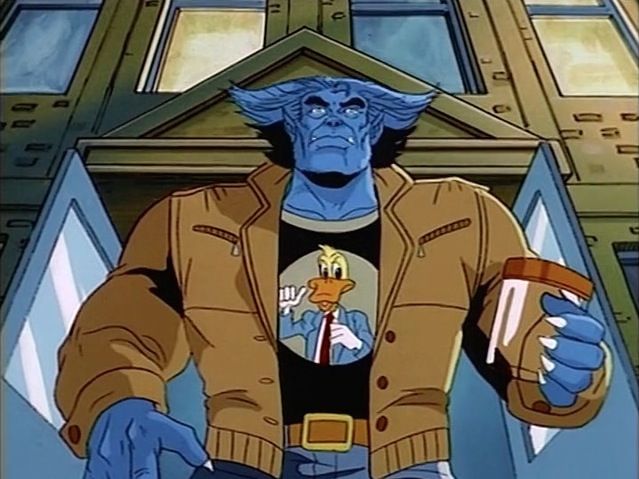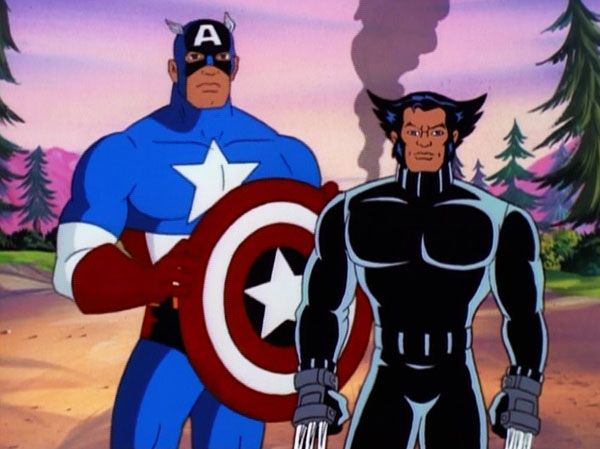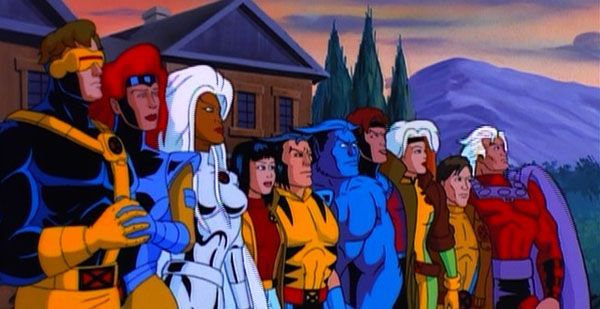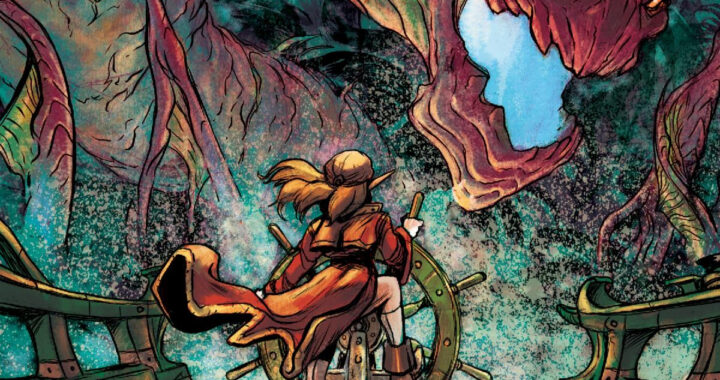
BOOK REVIEW: X-Men: The Art and Making of the Animated Series
As a lifelong X-Men fan since my childhood, I have a strong affection for X-Men The Animated Series. X-Men: TAS was a large part of my teenage years, and I spent many afternoons back in the Fox Kids era watching this show. Although I“d been reading the comics long before the show ever came out, I was impressed with how much the animated series understood what the X-Men was about, and who these characters were. I felt like the creators of the show had read the same books I had while I was growing up (as it turns out, they did), and that they had the finger on the pulse of what Len Wein, Chris Claremont, John Byrne, and others had created. In an age now where deviating from the source material is the norm, it“s hard to believe that a 90“s cartoon could capture the flavor of the X-Men to this degree. Like many, I“d long wondered what the process was, how they managed to pull off such an impressive hat trick.
Eric and Julia Lewald, the writers and creators behind X-Men: The Animated Series, have now answered those questions in a handy coffee-table volume. X-Men: The Art and Making of the Animated Series offers a look back into the past, offering a glimpse into the behind-the-scenes process of how the series was made. The book covers the entire history from the series, from its inception and approval by Fox to a thorough discussion of all five seasons until its conclusion. Not only is this book a thorough narrative of what happened from the people who were there, it also includes secondary documents and interviews with other people involved with the show. The book also includes numerous pieces of artwork from the series artists, including stills, concept art, storyboards, layouts, and final art pieces used in the series. The book even includes extra content, including unused artwork and an episode viewing guide in the correct order for series fans to watch the series. All of this is included in a thick hardback volume of roughly 288 pages with an eye-catching cover, including tons of content you likely won“t find elsewhere.

One point about the book I appreciate is the tone and candor of the Lewalds as they describe the behind-the-scenes process. The book is professionally written, and it treats everyone involved fairly and even-handedly. The voice is mostly neutral, though it feels written by a friendly voice who was involved in the process and is guiding the reader through the show“s journey. There“s also a deep love for the X-Men in every page, and there“s no question that Eric and Julia Lewald love the characters and what they represent, even if they didn“t come in as lifelong fans of the comics. At the same time, this book offers candor and real honesty about the struggles the X-Men: TAS staff had with the corporate decision-makers at the network and at Marvel. These events are described matter-of-factly, and they are backed up with official documents used during the making of the show. The book is honest about the behind-the-scenes problems, but it respects all the individuals involved and never treads into “tell all book”“ territory. That is a difficult balancing act, but this book makes it look effortless, and that is appreciated. The focus of the book celebrates everything great about the X-Men, the characters, and its legacy, as it should be.
The book also presents the people who made the show as real people, and the way the book is written makes one feel as though we know them as people. Some of them were deep hardcore comics fans, like Larry Houston. Some had worked in comics before coming to work on the show””Frank Brunner, former artist on Howard the Duck, was one of the main series artists. (In fact, a notable still featuring Beast wearing a Howard the Duck shirt was drawn by Brunner as an homage.) Still others discovered the X-Men by working on the show and came to love the characters because of their time on the animated series (including the Lewalds themselves). The Lewalds clearly view their work on X-Men The Animated Series as a team accomplishment, involving a great team of writers, artists, voice actors, and many others to bring their vision to life. If this book is anything, it“s the story of the team“s journey to bringing the merry mutants to the screen.

If you“re hoping to learn more about the X-Men animated series, you likely will find some real surprises nestled within these pages. One notable point of interest concerns the appearance of master villain Mister Sinister and the resurrection of fan-favorite Morph in Season 2. Although Sinister“s presence was cleverly planted at the end of Season 1, it was in response to the network“s insistence that Morph be brought back from the dead after the character was killed off in “Night of the Sentinels”“. In the end, the Lewalds agreed to bring Morph back, but the arc of bringing him back as a tortured antagonist was inspired and quite possibly the best workaround to the situation. Other documents bring to light the process of how the X-Men were adapted, including their research process and design process for each of the cast members. It was interesting to learn, for instance, that they drew on the old official Marvel Handbooks (annotated by Larry Houston, who knew the comics) and an obscure Marvel Super Heroes RPG handbook (both of which I“d actually owned myself back in the day). Even details such as the inclusion of Sinister“s “Dracula”“ teeth (based on a Marc Silvestri design from the comics that was abandoned) shows a clear train of thought from concept to execution. These small insights show the animated series in a different light and help the reader understand the undertaking to create the series.
In terms of negatives, the only real noticeable issue is the pacing and the way the material is balanced between chapters. The early chapters are quite heavy in terms of background information and supporting documents, especially the introductory chapters and the discussion of the first two seasons. The remaining chapters are less focused on story points and insider tidbits, especially in the discussion of the last two seasons, and more focused on artwork and supporting visual material. Even there, though, there are some interesting details, such as how the Lewalds managed to get Len Wein back for the Captain America/Wolverine episode “Old Soldiers”“, and how they got Marvel“s approval to use Cap for the episode. As a huge fan of both that episode and the Chris Claremont/Jim Lee comic that inspired it, it was a treat to learn more about that story. At the same time, the focus is more on the artwork around that section of the book, making it a quicker read around that point. Still, the artwork segments are fascinating as well, and the glimpses into storyboarding and the production process is quite compelling, especially for art and animation fans.

If you“re looking for a gift for that X-Men fan for the Christmas season, X-Men: The Art and Making of the Animated Series is an excellent choice. Even at a $50.00 price point, there“s more than enough material in this book to justify that expense. The Lewalds have done an excellent job of presenting a comprehensive look at one of the greatest superhero animated series ever made. With the show currently available on Disney+, this book is a great companion piece for anyone who wants to revisit the series, especially with a detailed episode guide by the people who wrote for the series. The book even addresses the show“s cultural impact, including its influence on the Fox X-Men film franchise. If you“re a fan of X-Men: The Animated Series, this book is a must-read, and you“ll likely gain something new from it even if you“ve seen every episode. If you“re a longtime fan or even someone discovering X-Men: The Animated Series for the first time, the book should have something worthwhile for you.
Score: 4.8/5
Buy your copy of X-Men: The Art and Making of the Animated Series Now!
Authors: Eric Lewald & Julia Lewald
Publisher: Abrams Books
[Note: Thanks to Abrams Books for generously providing a copy of the book for discussion and review purposes.]
Author Profile
- Steve Sellers had been a fan of superheroes ever since Superman: The Movie. But it took the JSA, the Legion of Super-Heroes, Dragonlance, Lord of the Rings, Twilight Zone, and Chris Claremont's legendary run on the X-Men to make him a writer and a longtime fan of comics, fantasy, and science fiction. Steve is the co-creator of WHITE DRUID & MICHAEL NERO and GUARDIANS OF ELAYIM for Omen Comics, and he is also the creator of BLITZ and SHOCKWAVE for Revelation Comics (an imprint of Omen Comics).









